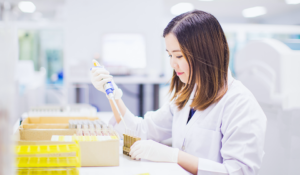
From September 9-13th, 2024, scientists, healthcare professionals, and the diabetes community from around the world gathered in Madrid, Spain for the European Association for the Study of Diabetes (EASD) annual conference. The event was attended by researchers, clinicians, pharmaceutical and device companies, regulators and leaders in the diabetes field from more than 120 countries, and featured presentations on type 1 diabetes (T1D) from many researchers funded both by JDRF Canada and our global affiliates.
Below are a few of the highlights.
Cures Research
Canadian company Sernova (London, ON) reported on their Cell Pouch System – an encapsulation device that acts like a “teabag” for cadaveric donor islets to be transplanted into people with T1D. Multiple cohorts of people have had the pouch implanted and, notably, the first patient has had the pouch for longer than 5 –years. The interim results have demonstrated safety (no adverse events to the pouch) and efficacy (islets are receiving blood flow and functioning). These clinical trials are still ongoing in Chicago, IL, and an additional cohort is expected to begin before the end of 2024.
To read more about cell therapy and encapsulation, please visit https://breakthrought1d.ca/cell-therapy/.
Dr. Timothy Kieffer of the University of British Columbia (UBC), and a project lead at the JDRF Centre of Excellence at UBC, presented on the safety and potential of stem cell-derived islet products. He outlined a long list of considerations in ensuring the safety of stem cell-derived islets, from the initial cell line (the original cells that are used to create islets) to the importance of patient choice. This talk was promising but realistic – noting that there are still many nuances that need to be addressed before cell therapy is a reality for the majority of people living with T1D.
To read more about cell therapy and ongoing stem cell research, please visit https://breakthrought1d.ca/cell-therapy/.
Disease-Modifying Therapies Research
The Joslin Diabetes Centre (Boston, MA) presented fascinating research from their Medalist Study of people living with T1D for 50+ years! In a study of 245 medalists, just over 30% had detectable levels of C-peptide, which is a biomarker for insulin production from beta cells. We know from years of research that some people with long-standing T1D still have functional beta cells and may still even be producing insulin (at very low levels), but it’s remarkable to see such results in a large cohort of people with T1D for 50+ years. This evidence supports the basis for beta cell regeneration approaches – that is, that in many people with T1D there are still insulin-producing cells that could proliferate (regrow more cells) with the right therapy.
Lindsay Pallo and Dr. Bruce Verchere, researchers at the JDRF Centre of Excellence at UBC, presented preliminary evidence of their immunotherapy work that is being conducted in collaboration with Vancouver-based Integrated Nanotherapeutics. This work is using an approach based on mRNA-containing lipid nanoparticles (LNPs) – the same type of technology used in COVID-19 mRNA-based vaccines. The new approach involves LNPs that contain T1D-relevant proteins plus immunomodulatory drugs, which the researchers’ data showed can prevent the onset of T1D in mice – and may even reverse established T1D. This type of immunotherapy could reduce or prevent further beta cell autoimmune attack, thereby preserving the ability to produce insulin and stopping T1D in its tracks.
Improving Lives Research
Researchers from McGill University, led by Dr. Ahmad Haidar, shared positive results from a small 4-week long study examining the use of semaglutide, a GLP-1 receptor agonist, sold under the trade name of Ozempic or Wegovy, in people with T1D using an automated insulin delivery (AID) system. Semaglutide has been shown to be effective at improving glucose and weight management in individuals living with type 2 diabetes (T2D) and obesity, but clinical trials for T1D are more limited. Graduate student Linden Perz reported that semaglutide improved glucose control in people with T1D using an AID system by increasing time in range and lowering time in hyperglycemia. Importantly, there was no increase in time in hypoglycemia and weight and insulin doses both decreased.
In cardiovascular research, Roberta Lupoli from Naples, Italy presented data showing that poorer vascular function is linked to increased time above range—and that three months on an AID system lowers time above range and improves endothelial function (the cells that line blood vessels and the heart).
Bayer’s FINEARTS-HF study results were discussed from a pivotal trial to evaluate the efficacy and safety of the oral medication finerenone in patients with heart failure (both with and without T1D and T2D). Finerenone showed statistically significant improvement in cardiovascular outcomes in adults with heart failure. Finerenone (AKA Kerendia) is currently approved for kidney disease in T2D and is under investigation for kidney disease in T1D.
This is welcome news for a few reasons. First, more drugs are needed for people with cardiovascular disease and T1D as this is the most common cause of death and disability in people with the condition. Secondly, finerenone is approved in Canada for use in reducing the risk of cardiovascular disease and kidney disease in T2D—but not T1D. The inclusion of people with T1D in the Finerenone (FINE-ONE) study is significant. Breakthrough T1D Headquarters (formerly JDRF International) and JDRF Canada applaud the initiative and encourage anyone living with T1D and chronic kidney disease to consider participating in the trial (LINK).
Research carried out at the University of Dundee has revealed that fear of hypoglycemia is a major barrier to physical activity among adults with T1D, despite advances in glucose monitoring and insulin therapy. The study highlights that improved education and discussions about safe exercise management in clinical settings could help address these fears. Participants who understood how to manage insulin and carbohydrate intake before and after exercise were less fearful of hypoglycemia, suggesting that better conversations in clinic could help people feel more confident exercising.
Find out more about type 1 and exercise.
https://youtu.be/BMwWs04ir7I?si=GK9LAC44_8FdcdLp (EN)
https://youtu.be/dtYjGXYFD9g?si=JXgI07jV3YXNZvl3 (FR)
Lastly, several presentations focused on the transformative power of medical devices to improve the lives of those living with T1D.
Among these presentations was a talk from Dr. Thomas Danne, Chief Medical Officer of Breakthrough T1D Headquarters (formerly JDRF International), who discussed the transformative nature of AID systems, (which Breakthrough T1D HQ played a significant role in developing through research and advocacy). These systems are still underutilized worldwide for a variety of reasons. However, diabetes technology is not a cure now, and it will not be in the future. Disease-modifying and cell therapies are going to be the advances that allow us to walk away from this disease for good.
New technology has been transformational—and it will continue to get better—but more people need access to it, and earlier. Diabetes technology will not cure this disease. But it does have the potential to keep people healthy so they can take advantage of cures when they are realized.



